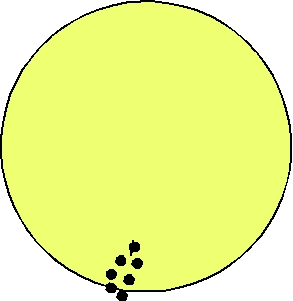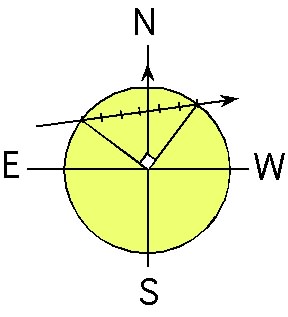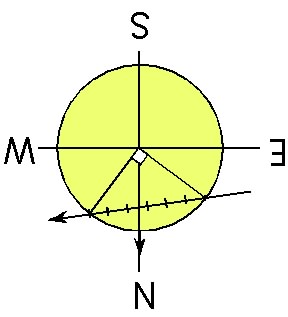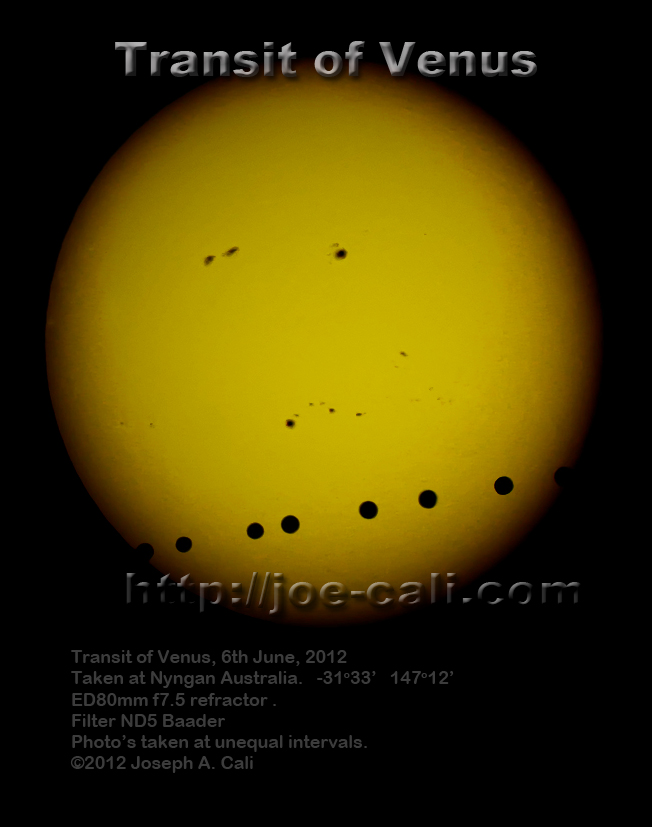WAITING FOR THE
SHADOW
SOLAR AND LUNAR ECLIPSE OBSERVING |
|
|
|
|
|
|
|
|
|


| Let's split the problem into two parts and then deal with each in isolation. The left to right effect Don’t think left to right but rather that Venus was moving from east to west. Pictures on the internet and on TV are usually generated using a geocentric perspective. That is the view from the centre of the Earth, north up. This coincidentally is the same as the view from the northern hemisphere when looking at the Sun in the south. Note the reversal of east - west compared to a map. In cartography, we are looking down, in astronomy, we are looking up! If you have trouble with this, lay on your back, head to the north feet south looking up. East is to your left, west to your right. Now roll over and face down as in a map view. The directions are reversed. |
 |
| If you are standing anywhere on the southern hemisphere
looking north, you effectively are standing upside down relative to the
geocentric or northern hemisphere frame of reference. Around midday when the sun crosses the meridian, the north pole of the Sun points down to the north celestial pole some 17o below due north on the horizon when viewed at Cairns latitude. Now the apparent direction of motion is right to left relative to the Sun’s orientation at midday. |
 |


